As so often of late, I’m behind in writing this log.
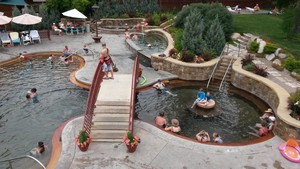 Our search for possible places to eventually settle takes us to Steamboat Springs: a small town in a mountainous setting with hot springs, brew pub and some bike paths. On paper it looks like a serious contender for the ‘A list’ but while the setting and hot springs meet with our approval, the town is incredibly busy with tourists and, needless to say, it’s not even ski season, the brewpub is expensive on the food front and disappointing on the beer, and the bike paths are limited: we relegate it to the ‘B list’ albeit with some regrets.
Our search for possible places to eventually settle takes us to Steamboat Springs: a small town in a mountainous setting with hot springs, brew pub and some bike paths. On paper it looks like a serious contender for the ‘A list’ but while the setting and hot springs meet with our approval, the town is incredibly busy with tourists and, needless to say, it’s not even ski season, the brewpub is expensive on the food front and disappointing on the beer, and the bike paths are limited: we relegate it to the ‘B list’ albeit with some regrets.
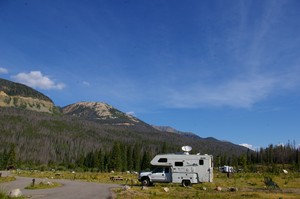 Leaving town we’re heading to Timber Creek campground in Rocky Mountain National Park. Our time in the park is marked by two distinct weather systems. At Timber Creek we experience the clear sunny mornings, building cloud and afternoon thunderstorms that are typical of the area. Dark clouds materialise, thunder rumbles and huge drops fall in an increasing crescendo as people run for cover, those leaving it too late are drenched to the skin in seconds.
Leaving town we’re heading to Timber Creek campground in Rocky Mountain National Park. Our time in the park is marked by two distinct weather systems. At Timber Creek we experience the clear sunny mornings, building cloud and afternoon thunderstorms that are typical of the area. Dark clouds materialise, thunder rumbles and huge drops fall in an increasing crescendo as people run for cover, those leaving it too late are drenched to the skin in seconds.
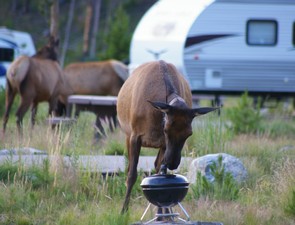 The campground is popular with the elk and on four of our five days we see a herd coming through; cows, spotted calves and young bulls. They are unfazed by human presence and bold in their insistence on examining fire rings for possible food scraps, with free-standing barbecue grills also coming in for some close examination.
The campground is popular with the elk and on four of our five days we see a herd coming through; cows, spotted calves and young bulls. They are unfazed by human presence and bold in their insistence on examining fire rings for possible food scraps, with free-standing barbecue grills also coming in for some close examination.
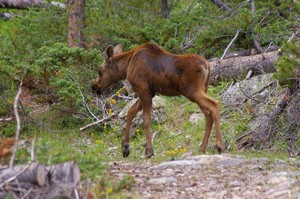
Our focus is again on work and Sterling continues to have a somewhat preoccupied look on his face as he continues wrestling with the new app, slowly ironing out the wrinkles. Between the work and weather we manage a short hike up towards the Grand Ditch, along the lower slopes of the Never Summer Mountains. A moose and her calf cross the track in front of us, their coats sleek and shiny, the moulting season passed, ample grazing available.
 We move from the east to the west side of the park on a day that starts out clear and sunny. As we drive up into the alpine ecosystem leaving the trees behind, the views open spectacularly. The Alpine Visitors Center is an overrun tourist hub and a very different experience to our last time here, over fifteen years ago, when the cloud was low and the rain so heavy that we could hardly see the buildings. It’s worth the visit for the views out over the cirque and for access to the Ute trail.
We move from the east to the west side of the park on a day that starts out clear and sunny. As we drive up into the alpine ecosystem leaving the trees behind, the views open spectacularly. The Alpine Visitors Center is an overrun tourist hub and a very different experience to our last time here, over fifteen years ago, when the cloud was low and the rain so heavy that we could hardly see the buildings. It’s worth the visit for the views out over the cirque and for access to the Ute trail.
 The trail is comparatively easy going and at nearly 3,600 m (11,800 ft) in altitude, we’re not complaining. It’s a near perfect trail: reasonable underfoot, gentle gradients, varied low lying vegetation, abundant wildflowers, elk grazing on the slopes and wide open views down into the wide bottomed valleys and up to the imposing mountain ranges. It’s the highlight of our visit to the park.
The trail is comparatively easy going and at nearly 3,600 m (11,800 ft) in altitude, we’re not complaining. It’s a near perfect trail: reasonable underfoot, gentle gradients, varied low lying vegetation, abundant wildflowers, elk grazing on the slopes and wide open views down into the wide bottomed valleys and up to the imposing mountain ranges. It’s the highlight of our visit to the park.
Given the weather patterns and the altitude of the Ute trail, the park advise being off the path by 1 pm. Lightning strikes on these exposed areas are common and potentially fatal. By midday the clouds are building, the thunder beginning to rumble in the distance. Reluctantly we head back to the camper and as we head down the Trail Ridge Road, the clouds darken to an ominous colour before bursting, their contents falling in a torrential downpour.
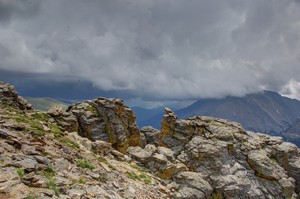
By the time we arrive in Glacier Basin campground on the east side of the park, the rain has cleared and it’s a hot sunny afternoon and we wrongly assume that the weather is going to continue with more of its summer mountain pattern. However, by the next morning, the rain has started in earnest and while it’s initially intermittent it soon builds up a head of steam, gives up the dry spells and pours down for thirty-six hours. The campground virtually empties: we’re among a few remaining RVs and a handful of diehard tenters.
Having been trapped inside for a day and a half we’re desperate to get out, so under grey skies, with waterproofs in the rucksack, we set off to Sprague Lake. The trail is empty, the lake side, accessible by road, teeming with people. We decide to press on to Bear Lake which proves to be another trail-empty/destination-overrun experience. Inspite of this, both lakes are worth the visit but the trek is made worthwhile by the raging white water of the mountain streams and the unexpected lily pond on route, its surface reflecting the surrounding mountains in the still water. A beautiful spot, except for the mosquitos and we manage to make the eleven mile round trip without getting the waterproofs out of the bag!
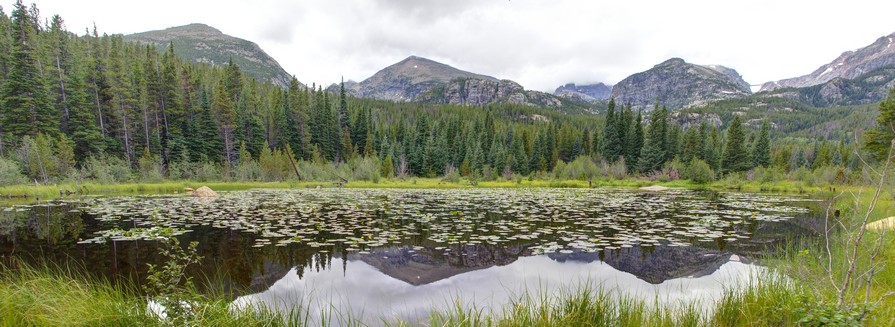
We’re due down on the front range to meet up with friends we haven’t seen for many years. We drive out of the mountains to the edge of the prairie, the flatness as far as the eye can see, a strange experience after so much gradient. We stop in Lyons to pick up our mail and the postmaster asks me to pronounce his surname. It’s Polish and when I do so correctly he is delighted, announcing to the queue that nobody gets it right. Such small things matter to people and I can definitely relate to his reaction: it reminds me of my nephew Anthony who spells out his name on Facebook as Pettreecoughski.
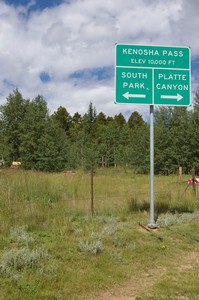 After a couple of evenings in Mark and Lynn’s driveway, visits to numerous brewpubs and more beer than is strictly necessary, we head back into the mountains to a campground at Kenosha Pass. I know some of you will be doing a double take at the name and I can assure you that it’s nothing like the similarly named Wisconsin town. From the pass, we drive across the now infamous South Park, stopping in Fairplay, the epicentre of the cartoon action and I’m a little disappointed not to catch sight of an orange hoodie.
After a couple of evenings in Mark and Lynn’s driveway, visits to numerous brewpubs and more beer than is strictly necessary, we head back into the mountains to a campground at Kenosha Pass. I know some of you will be doing a double take at the name and I can assure you that it’s nothing like the similarly named Wisconsin town. From the pass, we drive across the now infamous South Park, stopping in Fairplay, the epicentre of the cartoon action and I’m a little disappointed not to catch sight of an orange hoodie.
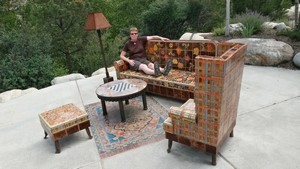
We’re heading for Buena Vista, pronounced by the locals as Biewna Vista, to see if it’s eligible for the ‘B List’. We’re pleasantly surprised: fantastic setting, lovely small town with the crucials of supermarket and hardware store, good brewpub, affordable property and an impressive looking hot springs just twenty miles away. It’s on the ‘A list’!